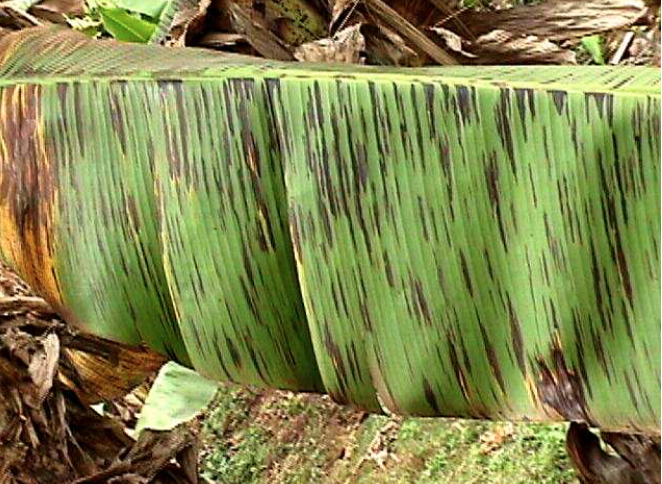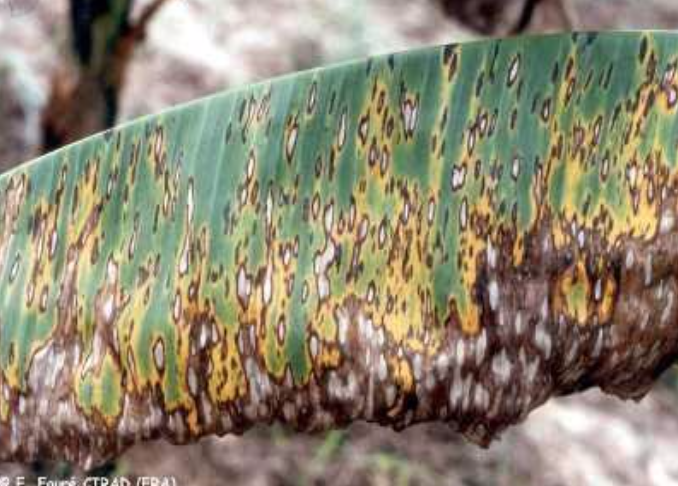Black leaf streak (Mycosphaerella fijiensis) (also called black Sigatoka)
Credit: Biovision-Infonet

(c) A. M. Varela, icipe

(c) INIBAP (www.inibap.org)
It is a very serious disease that affects the leaves of banana. The spores of this fungus are carried in the wind. The spores germinate in moisture and infect the leaves. The lesions gradually grow larger and kill large areas of the leaf. This results in lower yields and causes the premature ripening of the fruit.What to do:
- Remove and destroy diseased leaves, as this will reduce source of infection. If diseased leaves cannot be removed from the plot and burnt, they should be deeply buried.
- Overhead irrigation encourages the disease. Under-canopy micro-irrigation or drip-irrigation is preferable. Plants are also more vulnerable to black leaf streak in sheltered areas where the humidity is high. Good drainage systems that take surface water rapidly out of plantations can reduce humidity.
- Avoid overcrowding of plants.
- Genetic resistance to black leaf streak is a long-term goal for disease management, especially for smallholders who cannot afford to purchase chemicals. Cultivars with high levels of resistance include ‘Yangambi KM 5’ (AAA), ‘Mysore’ (AAB), ‘Pelipita’ (ABB), ‘Saba’ (ABB) and ‘Pisang Awak’ (ABB). However, these do not suit all local tastes and some are susceptible to Fusarium wilt (Fusarium oxysporum f.sp. cubense).